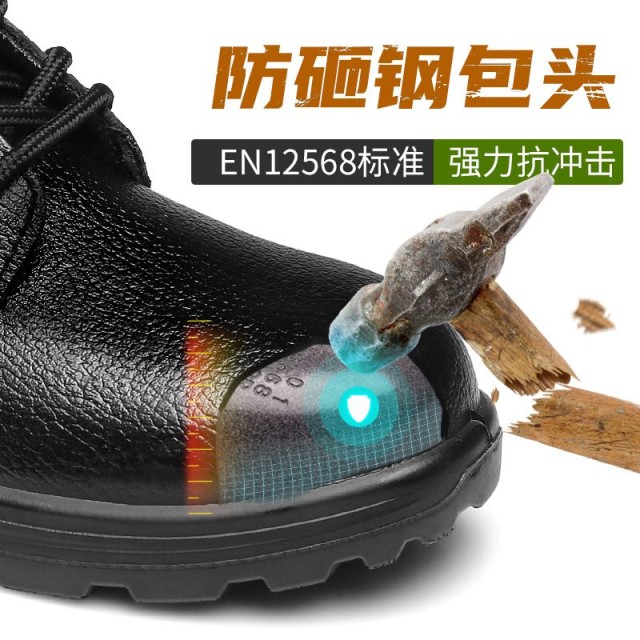Workers in construction, manufacturing, and heavy industries often worry: Can steel toe boots actually cause more harm than good? This persistent myth suggests that heavy impacts could bend the steel cap inward, crushing toes instead of protecting them. But decades of engineering innovation and rigorous safety testing tell a different story. Here’s how certified steel toe boots redistribute forces, meet strict global standards, and prevent life-altering injuries—backed by evidence that dispels common fears.
Why the Steel Toe Injury Myth Persists
The idea that steel toes might amplify injuries stems from outdated designs and isolated incidents. Early 20th-century boots lacked the advanced materials and structural engineering of modern footwear. Today’s boots undergo simulations of extreme workplace hazards, ensuring they deflect and disperse energy rather than buckle under pressure.
Key factors fueling the myth:
- Misinterpreted Anecdotes: Rare cases of improper boot fit or substandard products are wrongly generalized.
- Hollywood Dramatization: Movies often exaggerate industrial accidents for effect.
- Physics Misconceptions: People assume steel behaves like a rigid trap rather than a reinforced shield.
Research confirms that ASTM-certified steel toe boots reduce injury risks by over 90% in impact scenarios.
Anatomy of a Steel Toe Boot: Materials and Mechanics
Modern steel toe boots are a feat of biomechanical engineering. The protective cap isn’t just a slab of metal—it’s a precision-shaped component integrated into the boot’s overall support system.
How Force Distribution Defies the "Crushed Toes" Scenario
- Impact Dispersion: When a heavy object strikes the steel cap, the force spreads laterally across the boot’s reinforced frame, minimizing localized pressure.
- Structural Rigidity: The toe box maintains its shape under forces up to 2,500 lbs (per ASTM F2413 testing), preventing collapse.
- Shock Absorption: Midsole materials like polyurethane or EVA foam cushion residual energy before it reaches the foot.
"Think of the steel cap as an arch bridge—it redirects weight outward to stable supports, not downward onto your toes."
Certified Protection: Industry Standards and Testing
Global safety standards ensure boots perform under real-world extremes. Two dominant certifications validate protective footwear:
ASTM F2413 vs. ISO 20345: What Rigorous Testing Reveals
| Standard | Test Requirement | Protection Level |
|---|---|---|
| ASTM F2413 (U.S.) | 75-lb force impact, 2,500-lb compression | Toe labeled "I" for impact resistance |
| ISO 20345 (EU) | 200-joule impact (≈148-lb force) | Toe cap must withstand 1,200 kg static pressure |
Both standards subject boots to:
- Drop Tests: Simulating tools falling from heights.
- Compression Tests: Mimicking heavy rolling objects.
- Penetration Tests: Assessing sole resistance to sharp objects.
Case Study: Boots Preventing Injuries in Construction Collapses
A 2022 analysis of warehouse accidents found that workers wearing ASTM-compliant steel toe boots avoided fractures in 97% of object-impact incidents, compared to 43% injury rates in non-compliant footwear.
Beyond Steel: Modern Alternatives and Their Performance
While steel remains the gold standard, new materials offer comparable safety with added benefits:
- Composite Toes: Fiberglass or carbon fiber caps provide similar protection (meeting ASTM/ISO standards) while being lighter and non-metallic—ideal for electrical work.
- Alloy Toes: Titanium or aluminum blends reduce weight without sacrificing strength.
- Hybrid Designs: Some boots pair steel with flexible metatarsal guards for full-foot coverage.
Trade-off note: Non-steel options may have slightly lower compression resistance but excel in corrosion resistance and temperature insulation.
Ready for Reliable Footwear Solutions? Partner with 3515
Whether you’re a distributor sourcing bulk orders or a brand owner seeking custom safety boots, 3515 delivers rigorously tested footwear engineered for real-world hazards. Our production expertise spans:
- Steel/composite toe boots meeting ASTM and ISO benchmarks
- Ergonomic designs to reduce fatigue during long shifts
- Industry-specific solutions for construction, oil/gas, and logistics
Protect your workforce with footwear that combines proven safety and comfort—Contact 3515 today to discuss your project.
Because confidence in protective gear shouldn’t be a guessing game.
Products You Might Be Looking For:
View ASTM-certified steel toe work boots
Explore durable customizable safety boots
Check out suede steel toe Chelsea boots
Browse 3515's customizable safety footwear
See leather steel toe work boot options
Related Products
- Wholesale Customizable Suede Safety Boots - Puncture-Proof with Velcro Closure
- Puncture-Resistant Velcro Safety Boots for Wholesale & Custom Manufacturing
- Customizable Anti-Smash Safety Boots for Wholesale & Private Label Manufacturing
- Wholesale Leather Safety Boots with Customizable Protective Toe
- Durable Leather Safety Boots for Wholesale & Custom OEM Manufacturing
Related Articles
- How to Extend Work Boot Lifespan: Science-Backed Care for Safety & Savings
- How to Choose Work Boots That Balance Safety, Comfort, and Durability for Your Job
- How to Choose Work Boots That Match Your Job's Safety Demands
- Work Boots vs. Western Boots: How to Choose the Right Footwear for Labor Safety
- Steel Toe Work Boots: Balancing Safety and Comfort for Demanding Jobs




















